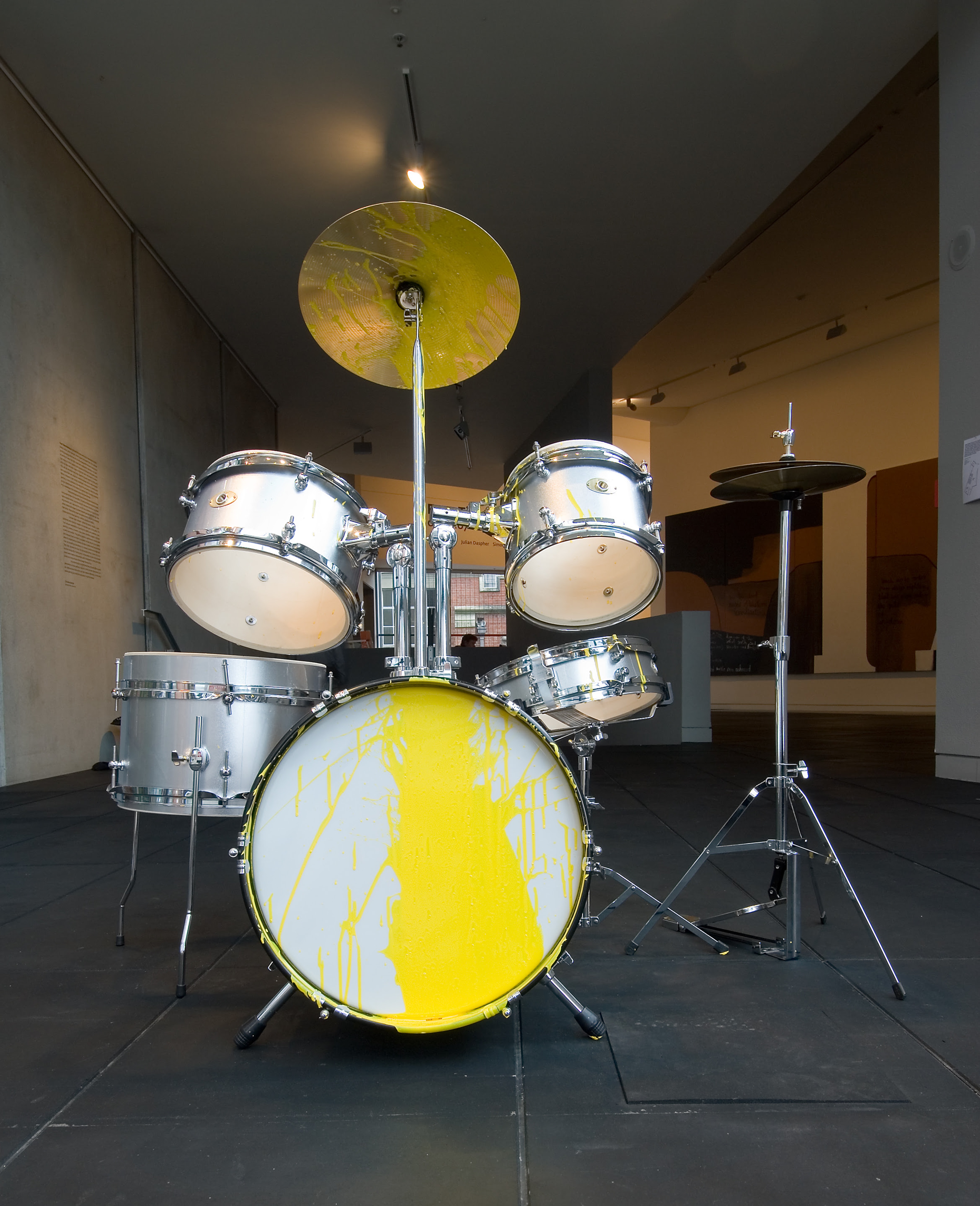Four Times Painting
Julian Dashper
Simon Ingram
Isobel Thom
Shane Cotton
curated by Christina Barton
01 June – 29 July 2007
Four Times Painting focused on the work of four contemporary New Zealand artists, who each critically engage with the history and practice of painting. Acknowledging painting as a medium that had come back into critical focus, the exhibition enlarged on this medium’s current situation and considered how painters engaged with its history, purpose, and material practices.
Curated by Christina Barton, Four Times Painting featured the work of Simon Ingram, Julian Dashper, Isobel Thom and Shane Cotton, four artists whose works can be approached as complex and multilayered meditations on painting’s relation to time.
Shane Cotton, for example, uses painting to reclaim the medium as an agent of remembrance. His works re-present history’s remains, mining the cultural shards and fragments that have survived from the past which speak about the legacy and effects of our complex cross-cultural inheritance.
Julian Dashper is interested in painting’s past, most especially the history of modernist abstraction. His practice both invokes that history as a living legacy and as a failed experiment. Four Times Painting presented a series of Dashper’s untitled works from 2006 that are elegiac in mood and mode, dealing with the transience of life as well as the passage of art history.
Simon Ingram’s works critically examine a history of painting’s relation to technology. This exhibition featured his ‘painting assemblages’ that used robotic technology to paint themselves and thus drew attention to the ‘performance’ of painting, and his ‘automata paintings,’ whose complex grid formations are built by using a methodology derived from the self-organising systems of artificial life.
Isobel Thom’s small careful studies of objects seen from every angle or revisited repeatedly resembled both the stop-frames of film and the fractured forms of cubism. These studies were subtle meditations on the nature of painting, most especially as a method of recording the awkward space between perception and representation.

Julian Dashper, Untitled (the painter's mistake), 2007, junior drum kit and enamel paint, dimensions variable. Installation view, Four Times Painting, Adam Art Gallery Te Pātaka Toi, Victoria University of Wellington, 2007

Julian Dashper, Untitled (the painter's mistake), 2007, junior drum kit and enamel paint, dimensions variable. Installation view, Four Times Painting, Adam Art Gallery Te Pātaka Toi, Victoria University of Wellington, 2007

Installation view, Four Times Painting, Adam Art Gallery Te Pātaka Toi, Victoria University of Wellington, 2007

Installation view, Four Times Painting, Adam Art Gallery Te Pātaka Toi, Victoria University of Wellington, 2007

Installation view, Four Times Painting, Adam Art Gallery Te Pātaka Toi, Victoria University of Wellington, 2007

Installation view, Four Times Painting, Adam Art Gallery Te Pātaka Toi, Victoria University of Wellington, 2007

Installation view, Four Times Painting, Adam Art Gallery Te Pātaka Toi, Victoria University of Wellington, 2007

Installation view, Four Times Painting, Adam Art Gallery Te Pātaka Toi, Victoria University of Wellington, 2007

Installation view, Four Times Painting, Adam Art Gallery Te Pātaka Toi, Victoria University of Wellington, 2007